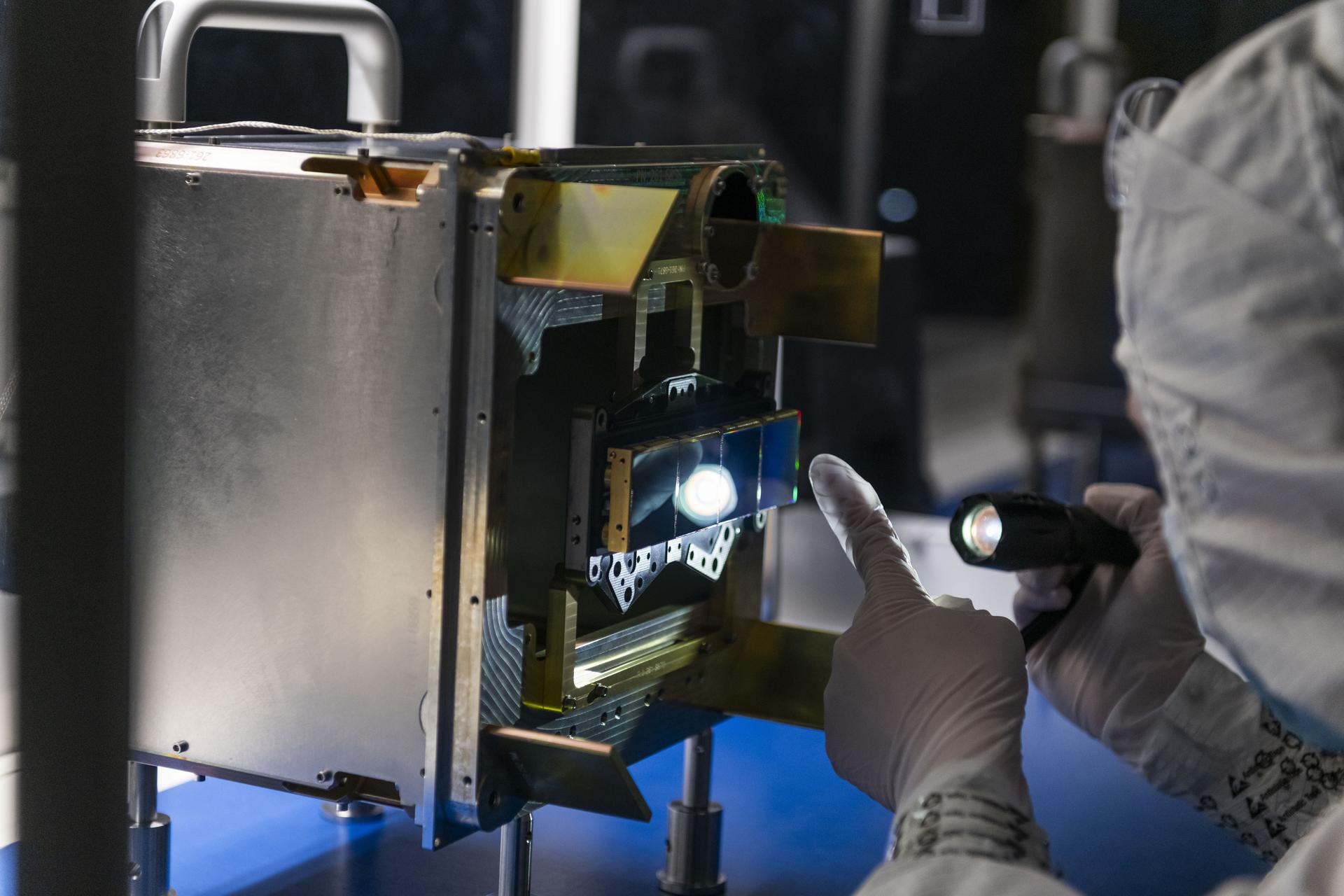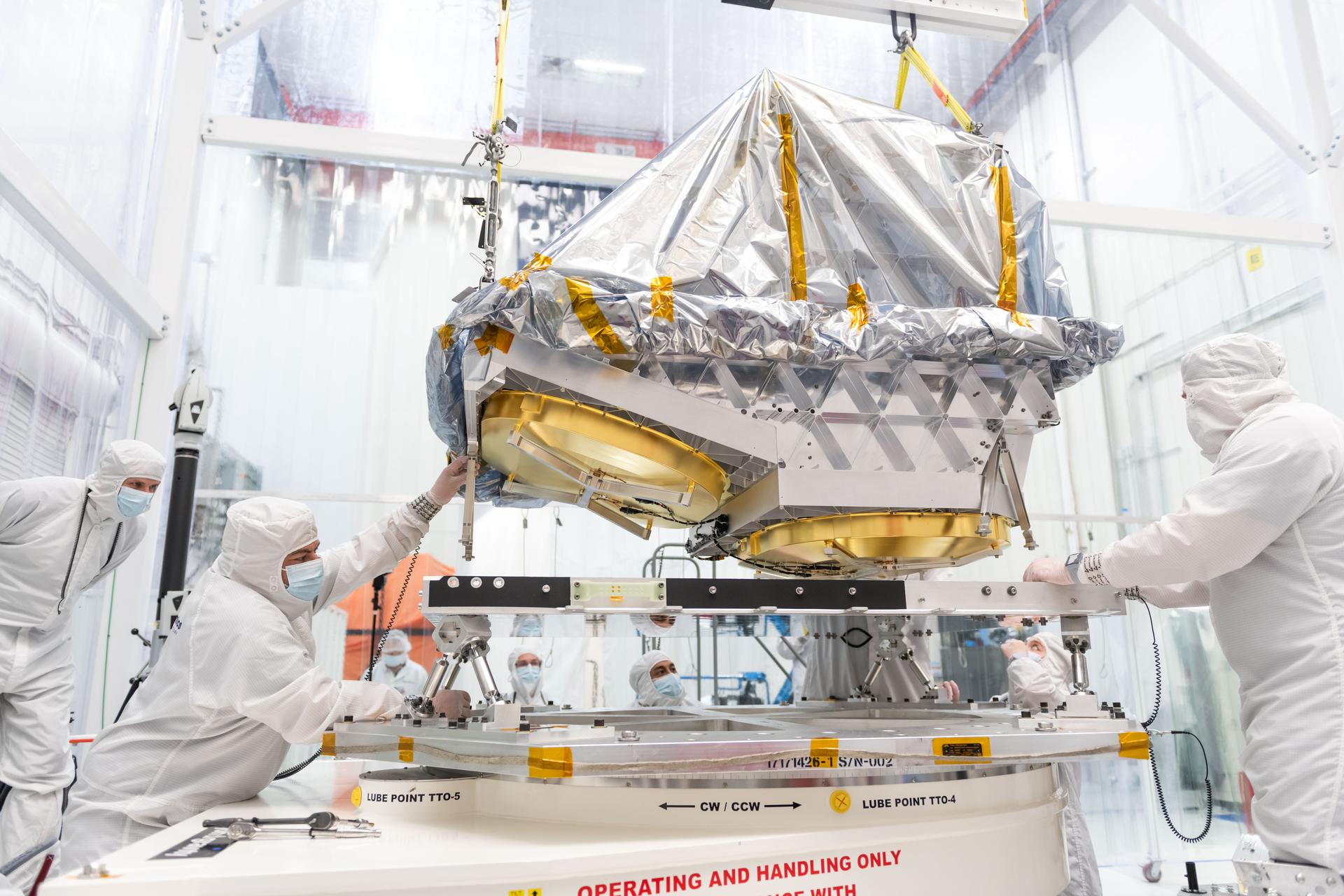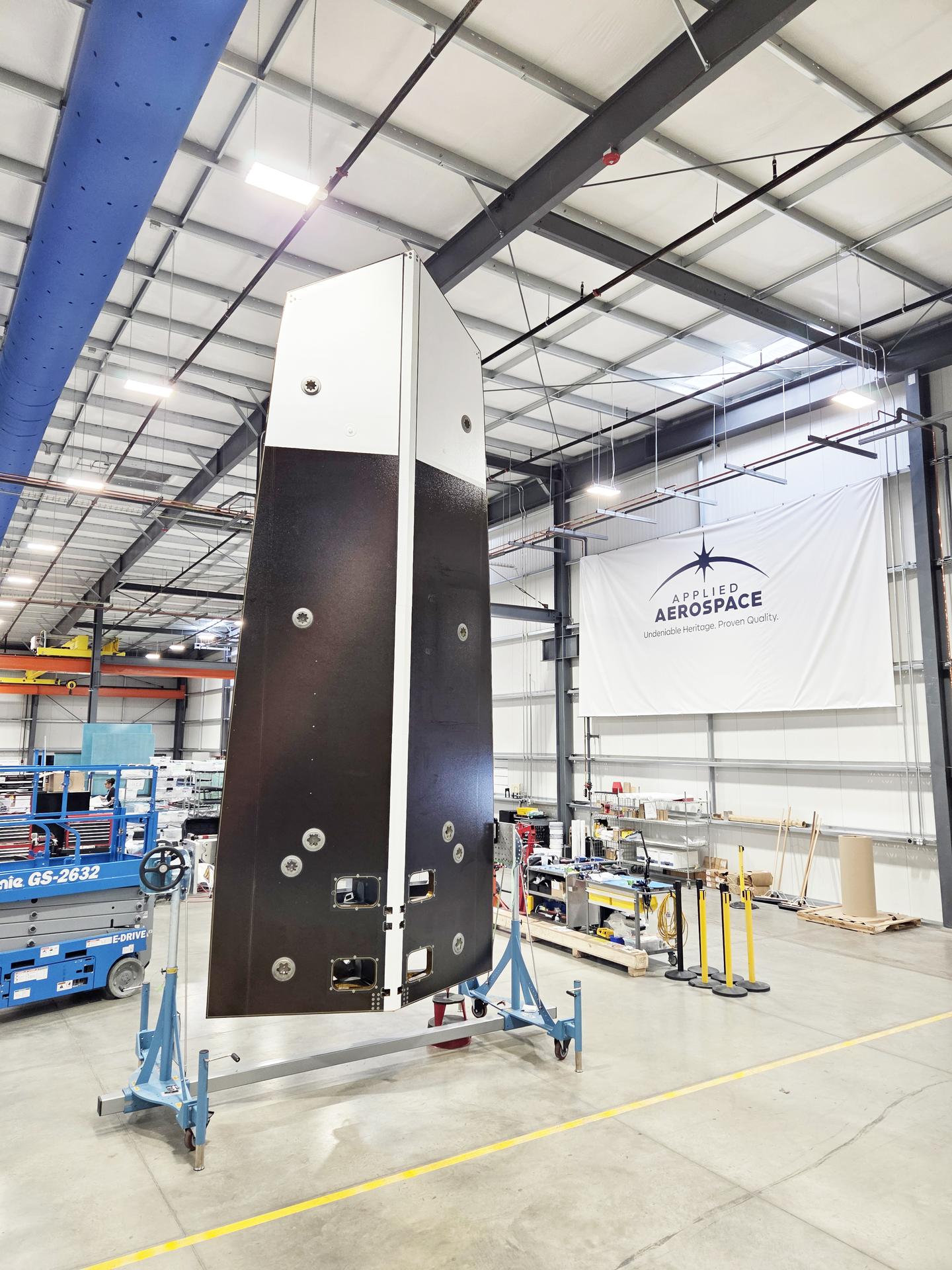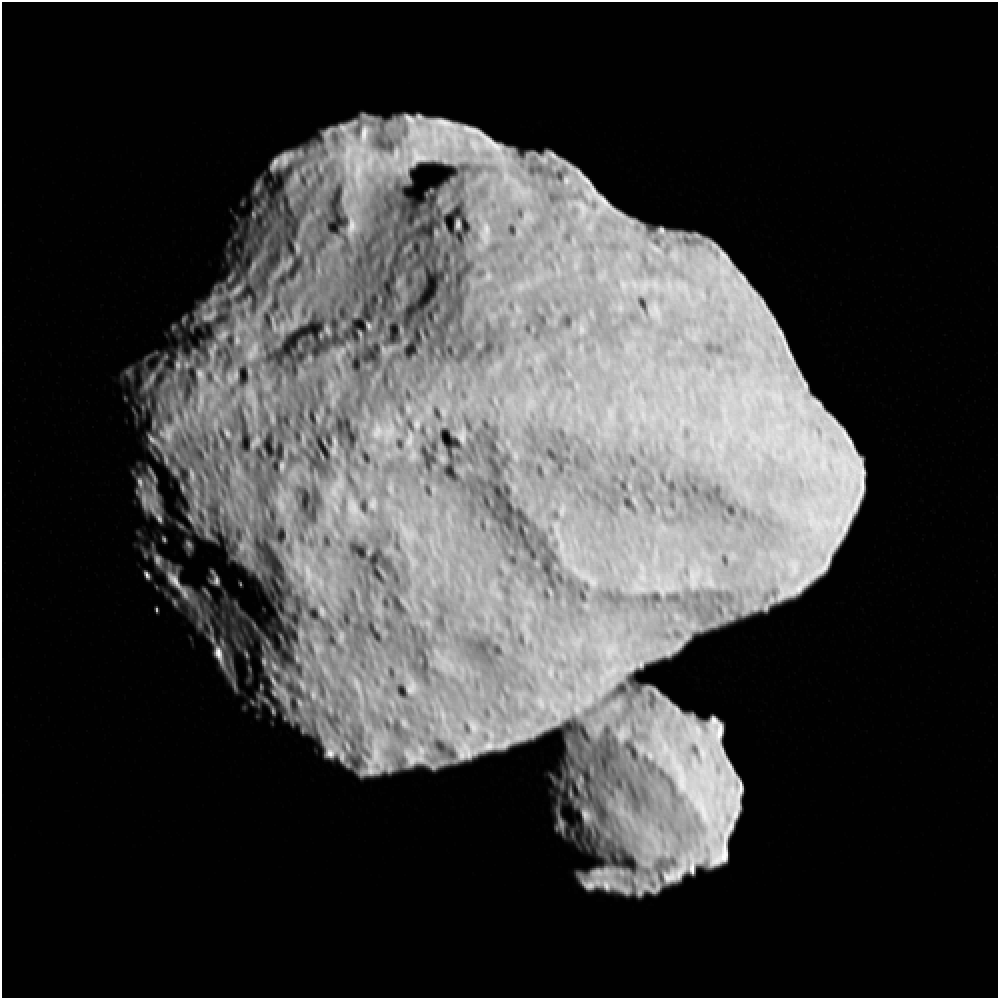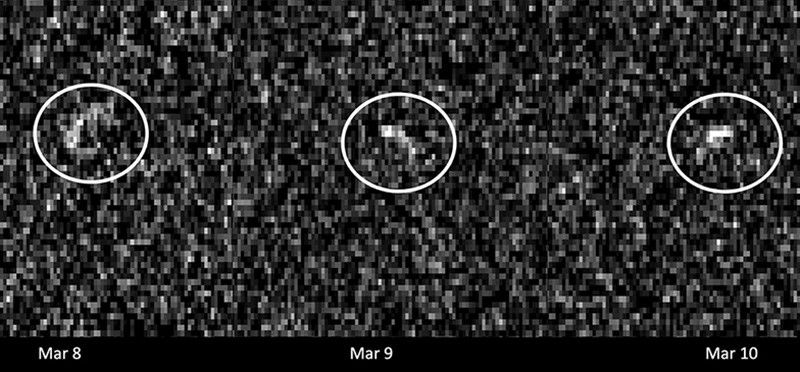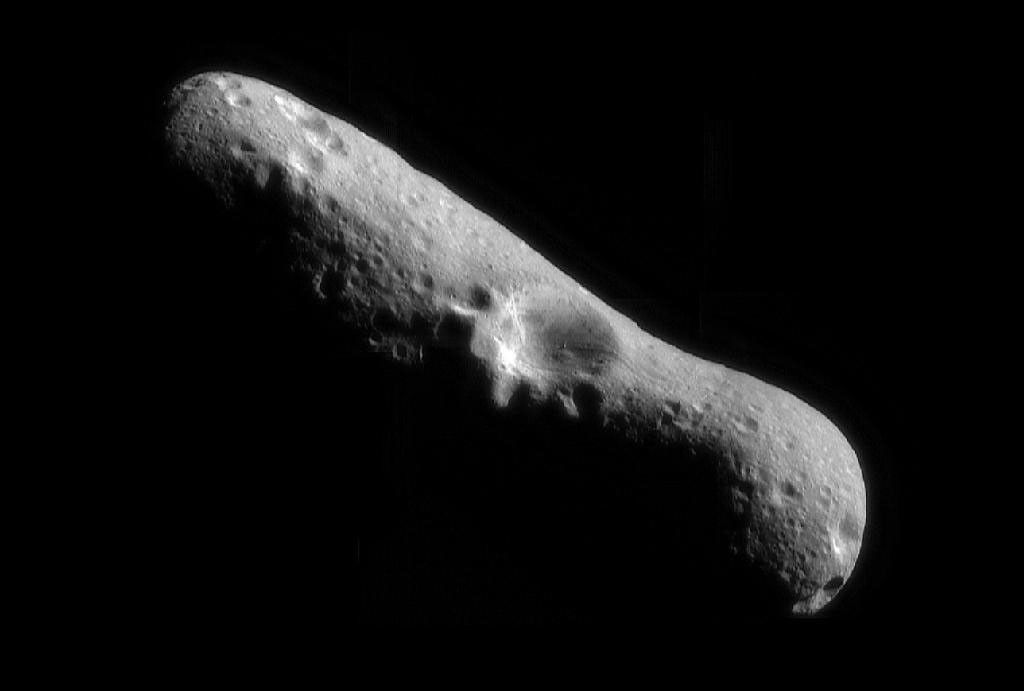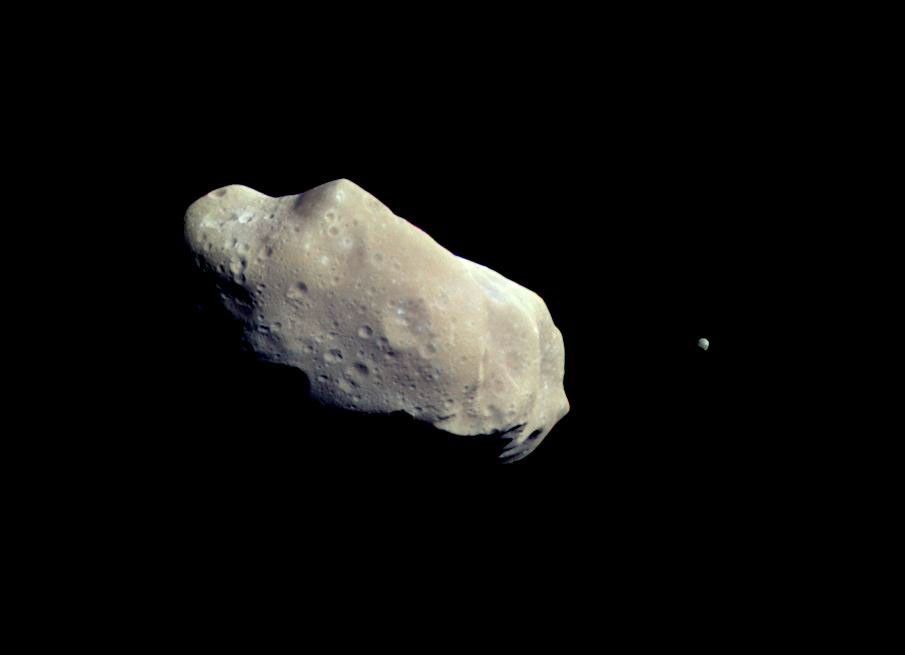NEO Surveyor
Multimedia
Images, videos, and resources related to NASA's NEO Surveyor mission.
Planetary Defenders
How would humanity respond if we discovered an asteroid headed for Earth? The NASA documentary "Planetary Defenders" takes you inside the high-stakes world of asteroid hunting and planetary defense.
Learn More About the ‘Planetary Defenders’ DocumentaryNEO Surveyor’s Large Sunshade Takes Shape
The sunshade for NASA’s Near-Earth Object (NEO) Surveyor mission towers above a fixture at supplier Applied Aerospace in Stockton, California, in September 2025. Standing at over 20 feet (6 meters) high, the sunshade is the largest component of spacecraft. The sunshade’s Sun-facing surface (visible here) will next be fitted with solar panels that will generate power for the spacecraft after launch. The spacecraft’s instrument enclosure, which houses the telescope and sensitive infrared cameras, will be located behind the sunshade, allowing the spacecraft to detect and track near-Earth objects that would otherwise be hidden by the Sun’s glare.
Credit: Applied Aerospace
Images
Watch NEO Surveyor take shape.
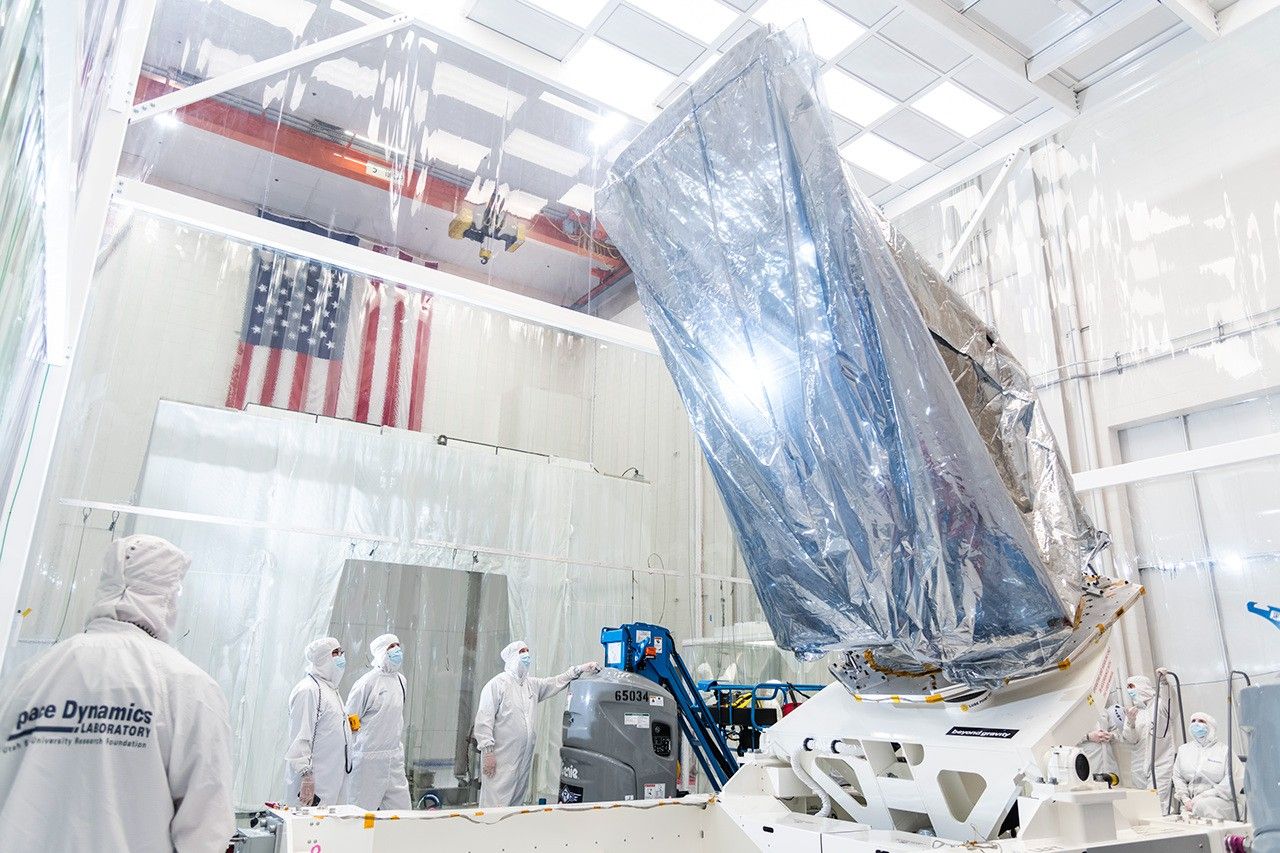
Instrument Enclosure for NASA's NEO Surveyor Arrives in Utah
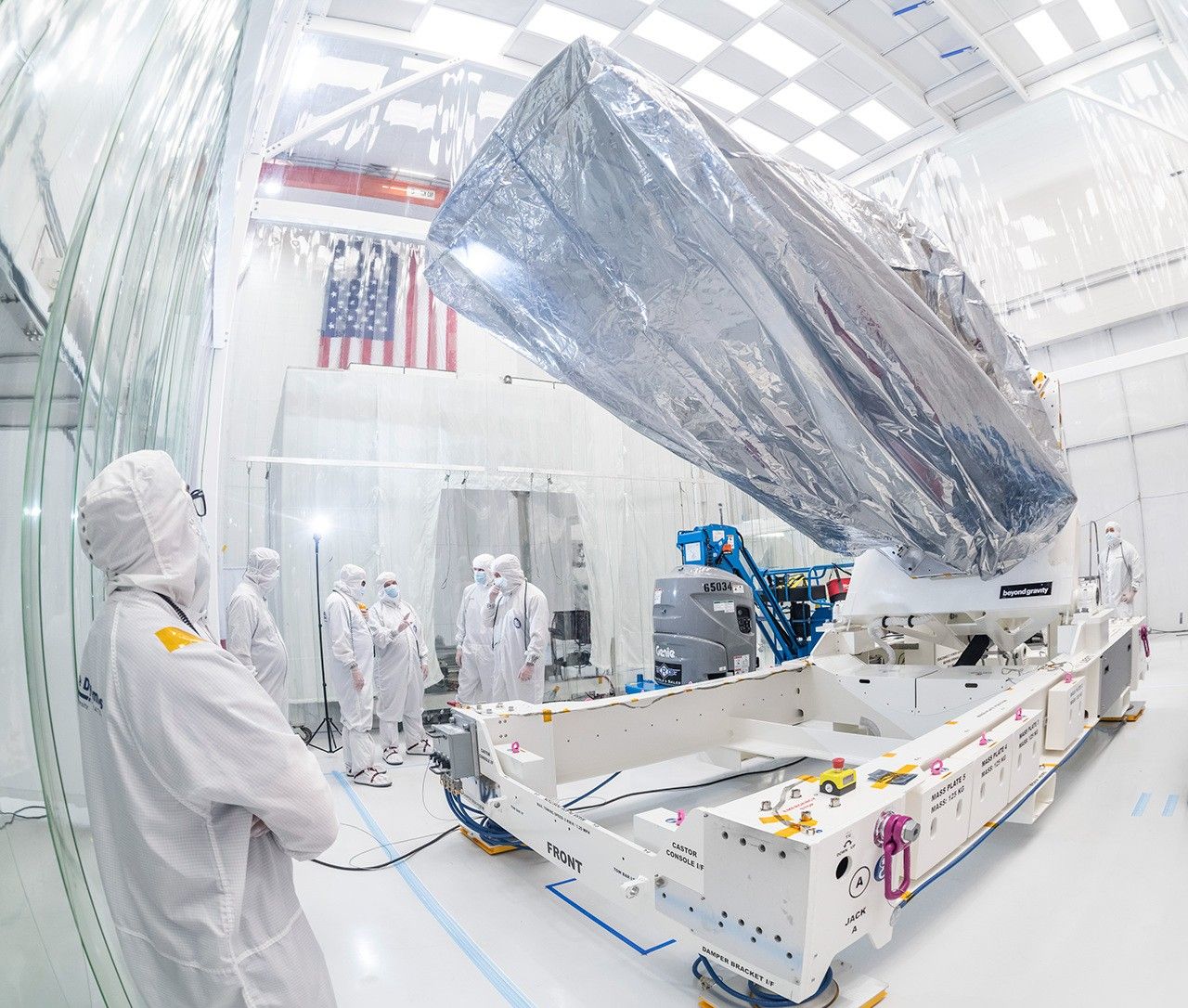
Instrument Enclosure for NASA's NEO Surveyor Arrives in Utah (Fig. A)
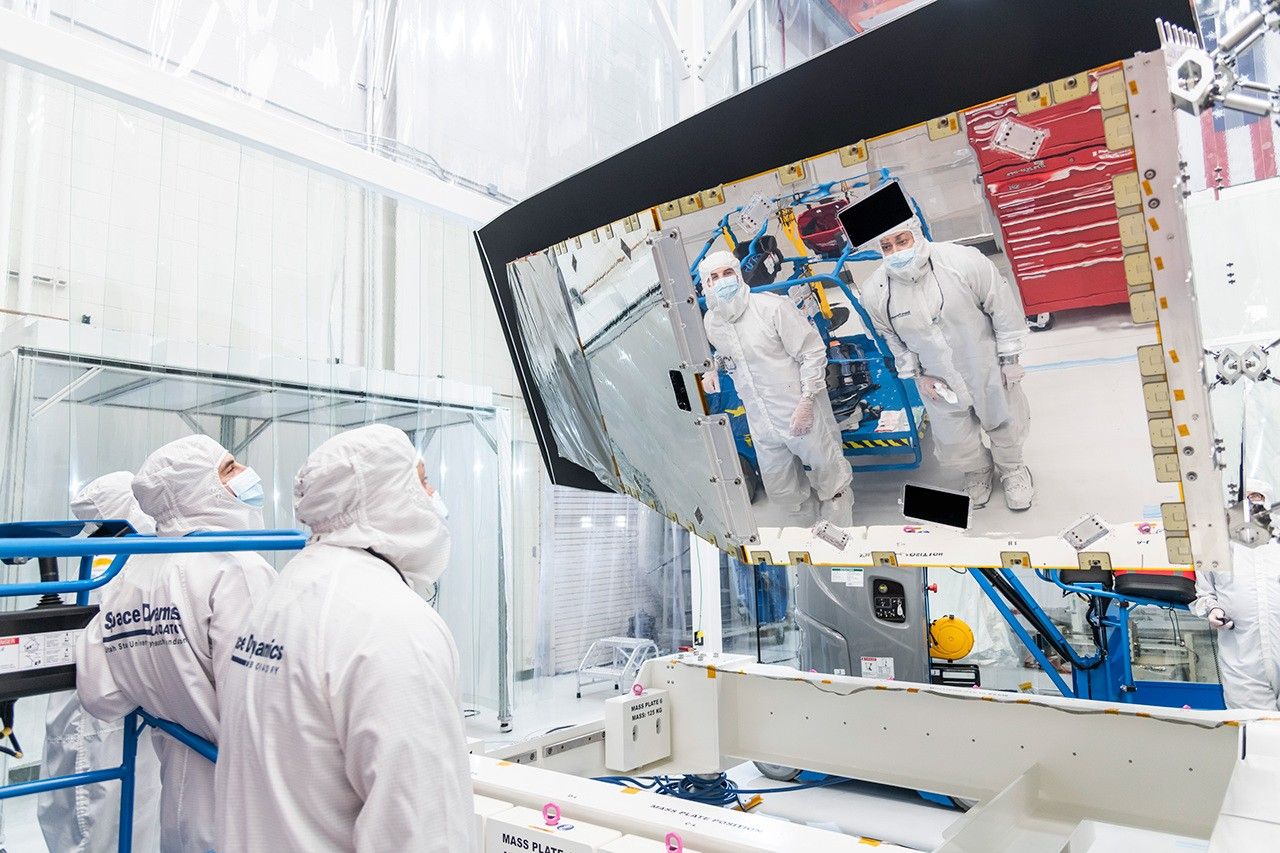
NEO Surveyor's Instrument Enclosure Gets Inspected

NEO Surveyor's Instrument Enclosure Gets Inspected (Fig. A)
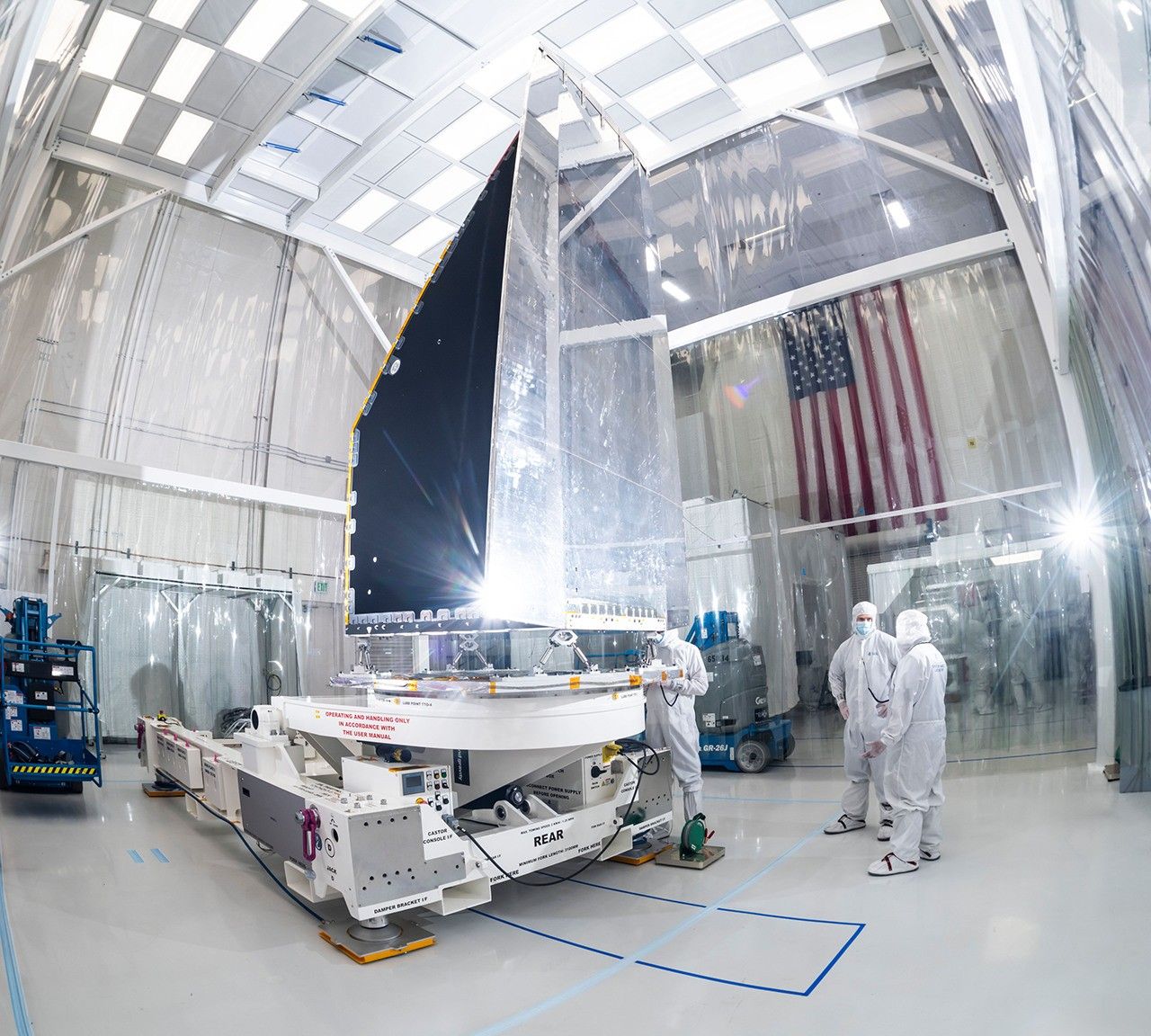
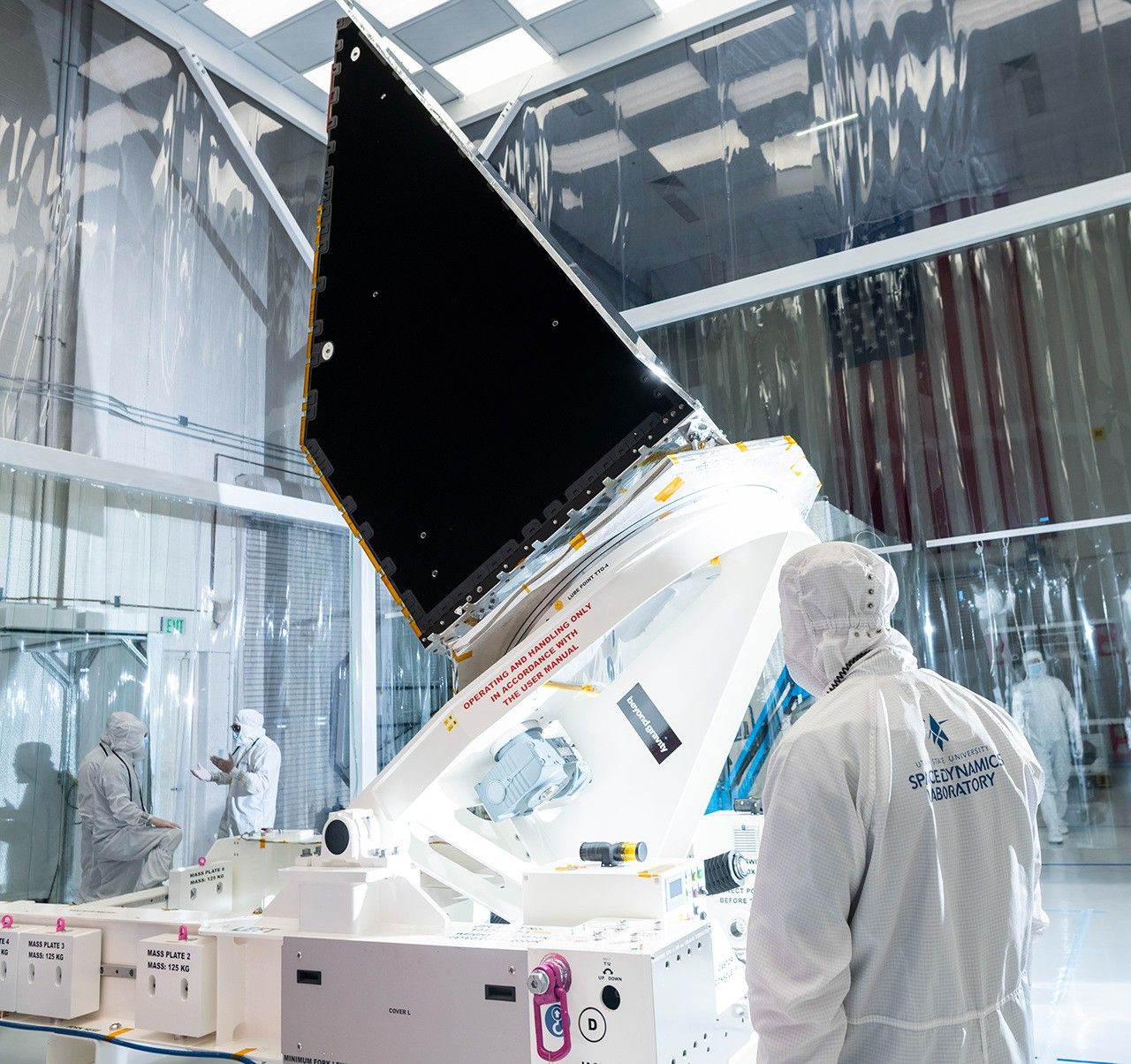
The Light and Dark Sides of NEO Surveyor's Instrument Enclosure (Fig. A)
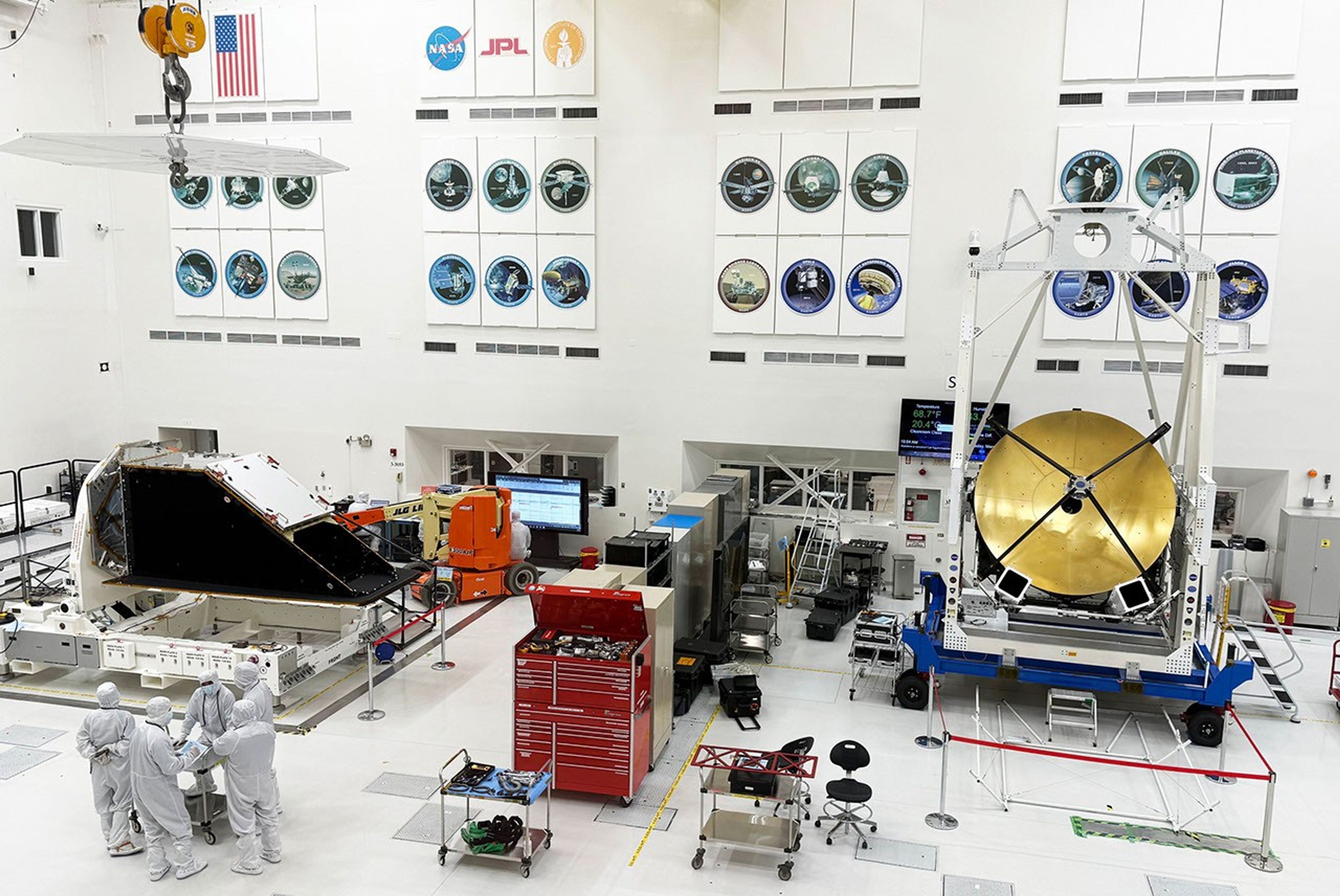
(Clean) Room for Two
NEO Surveyor and ASTHROS being assembled side-by-side in High Bay 1.

NEO Surveyor Instrument Enclosure Inside Historic Chamber A
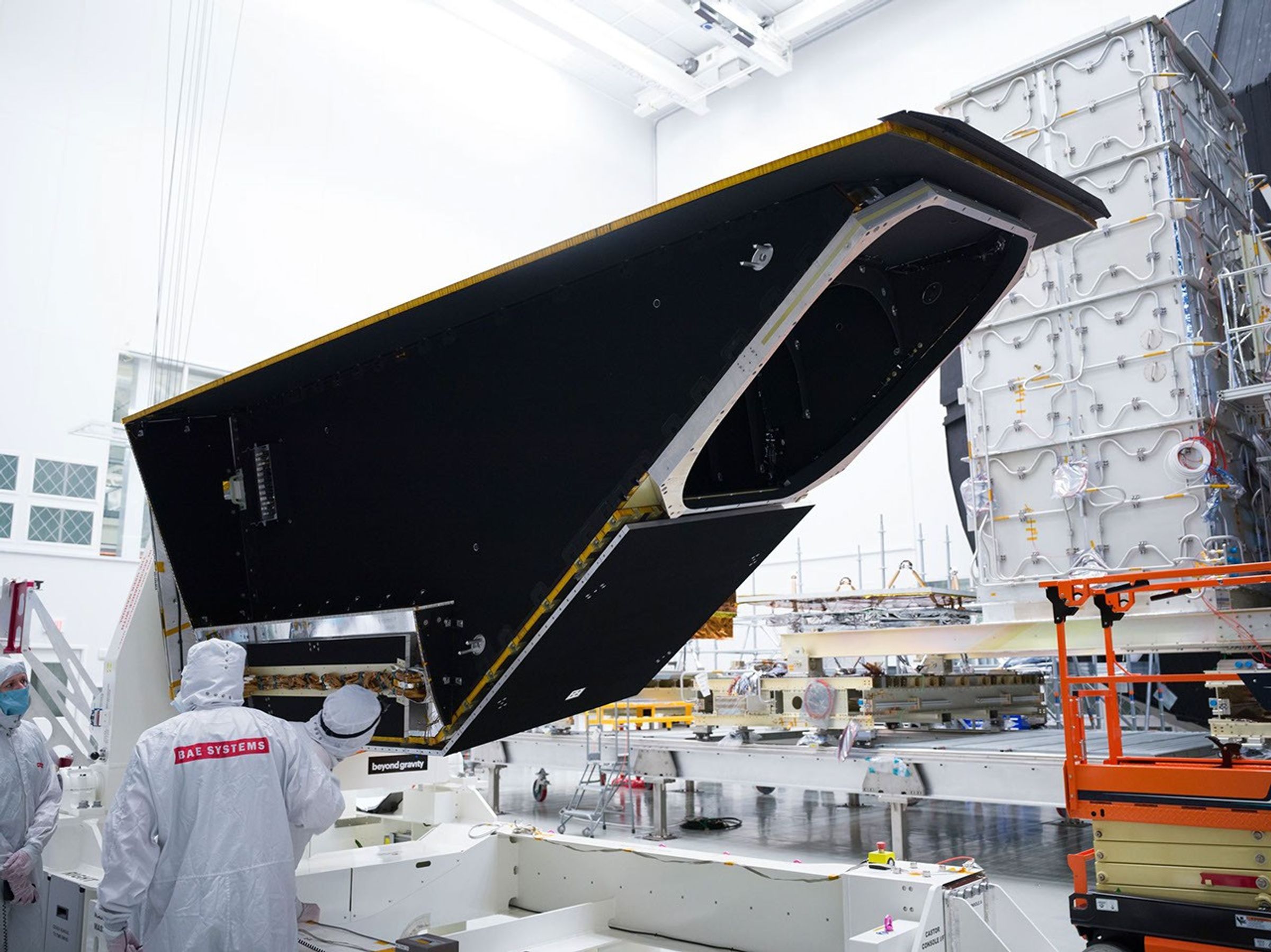
NEO Surveyor Instrument Enclosure Begins Environmental Tests
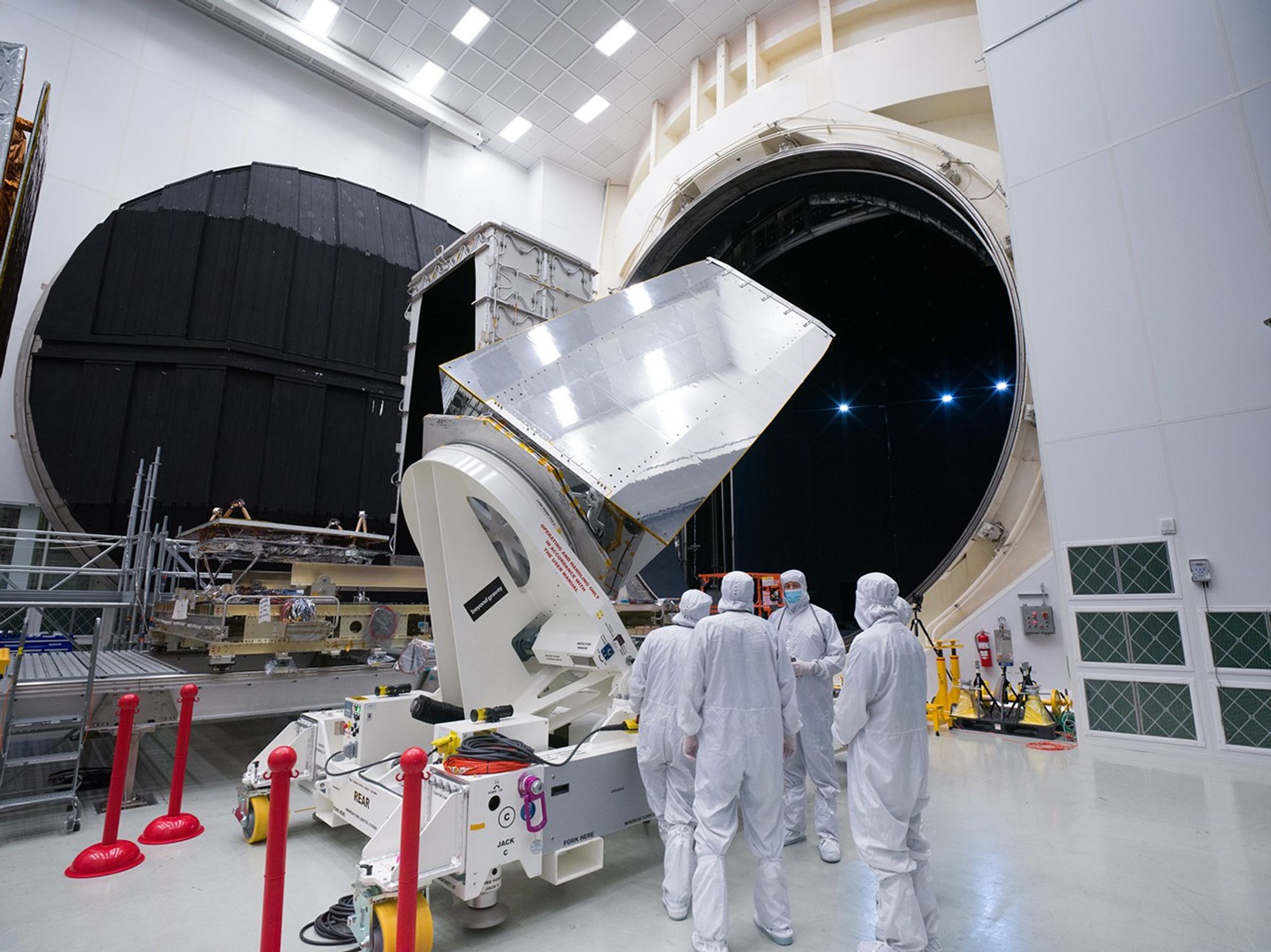
NEO Surveyor Instrument Enclosure Inspected by Technicians

NEO Surveyor's Mirrors Undergo Inspection at JPL

NEO Surveyor's Telescope Optical Bench Under Construction at JPL
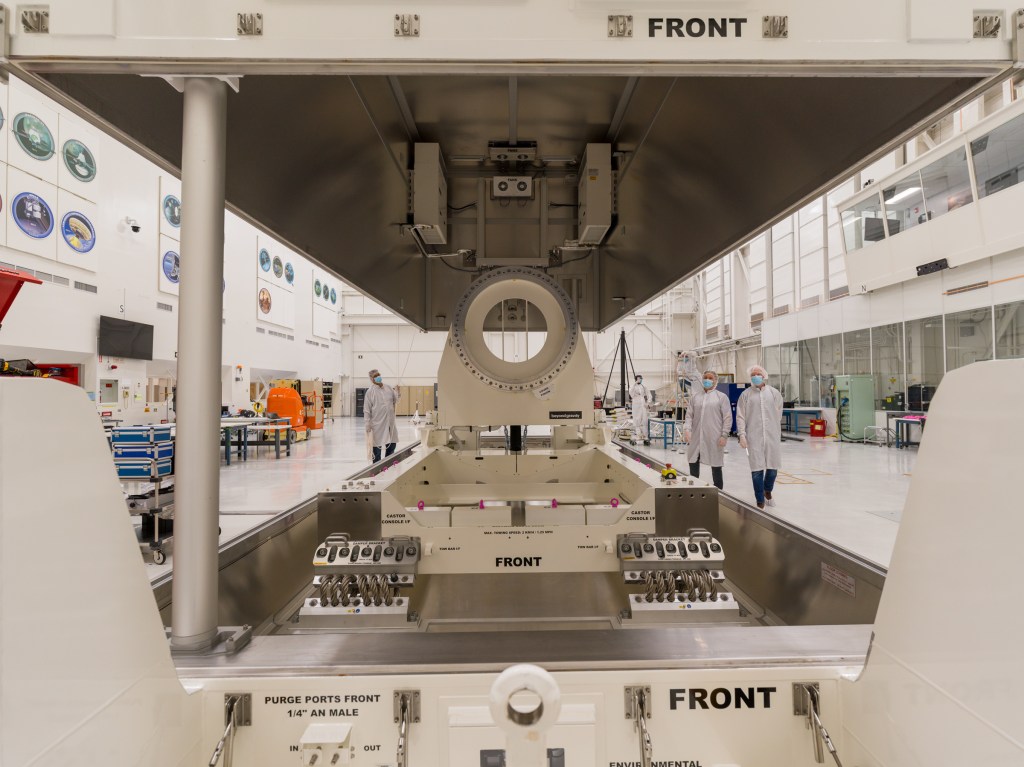
Close-Up of MAAD's Interface Ring
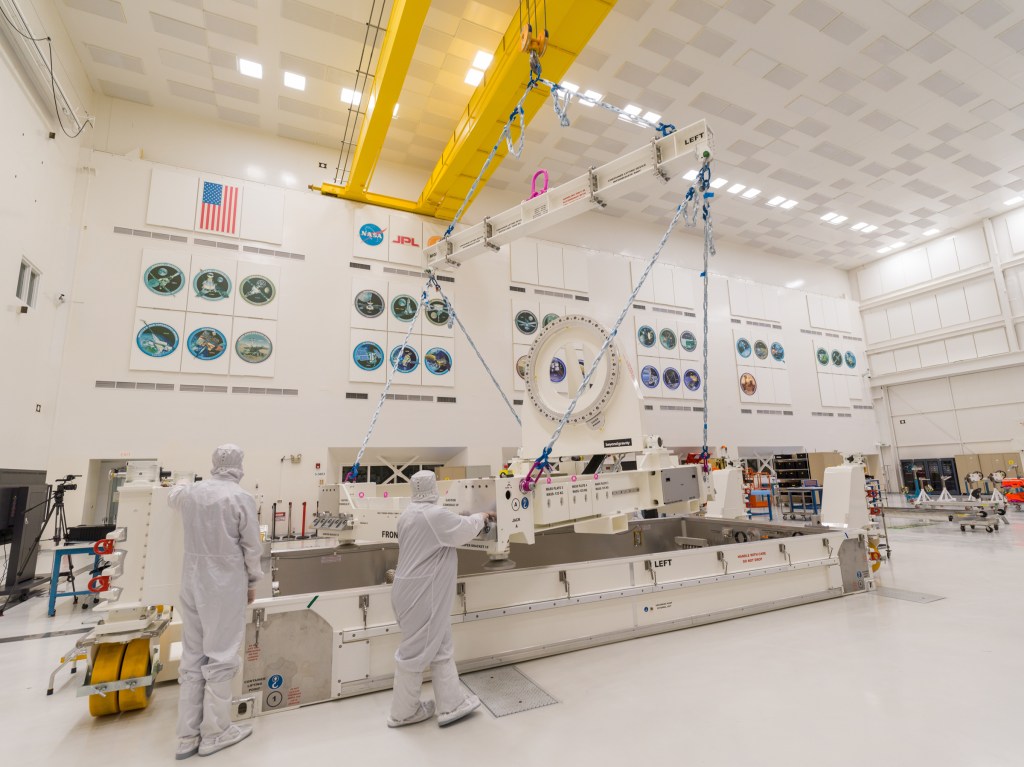
MAAD Being Lifted
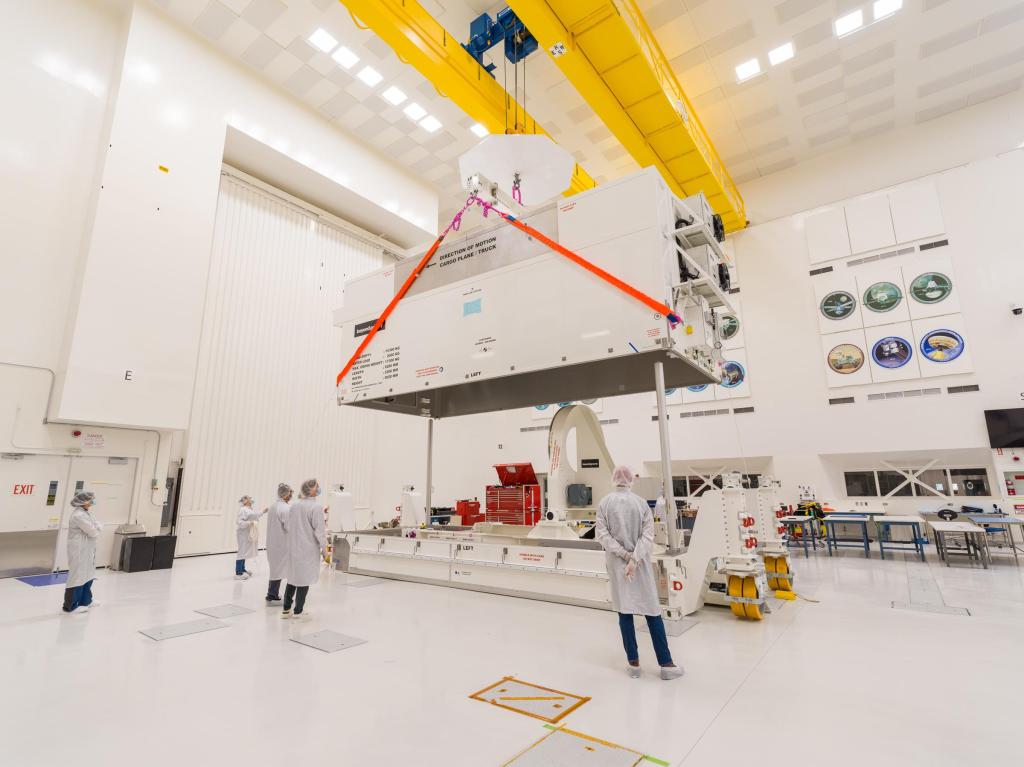
Lifting the Lid
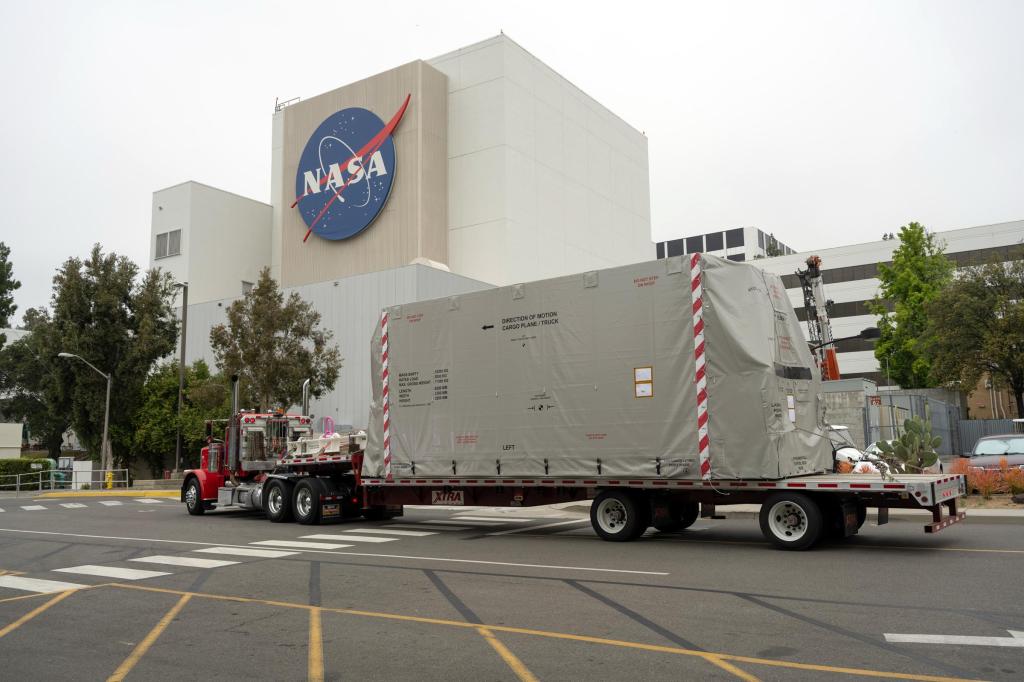
NEO Surveyor’s Transportation System Arrives at JPL
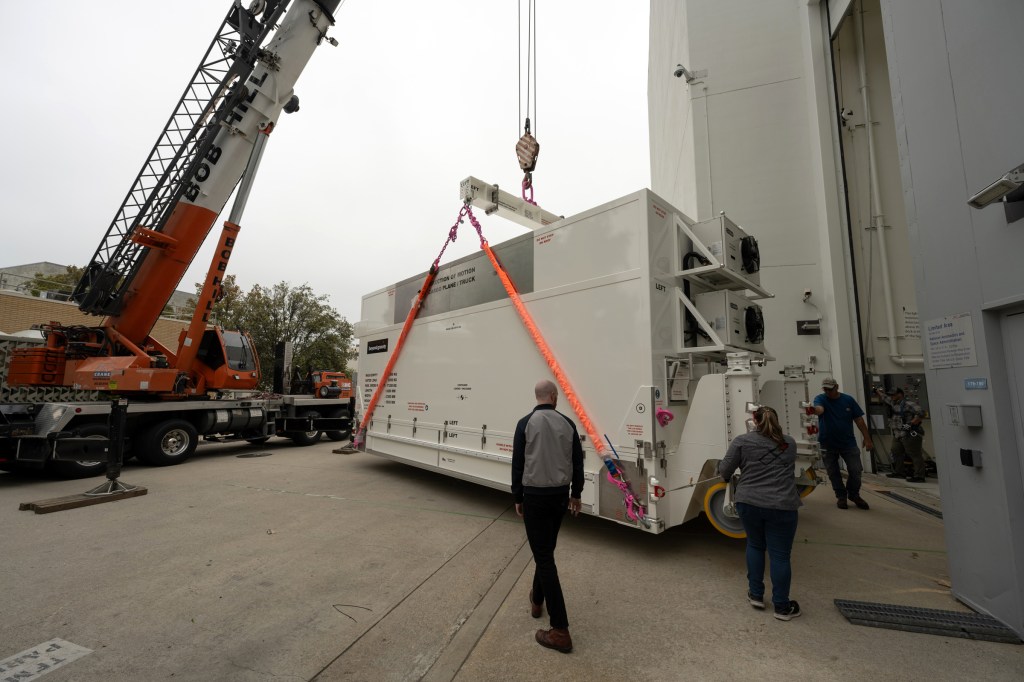
MATS Being Lowered to the Ground

NEO Surveyor in an Infrared Starfield Filled With Asteroids (Artist's Concept)
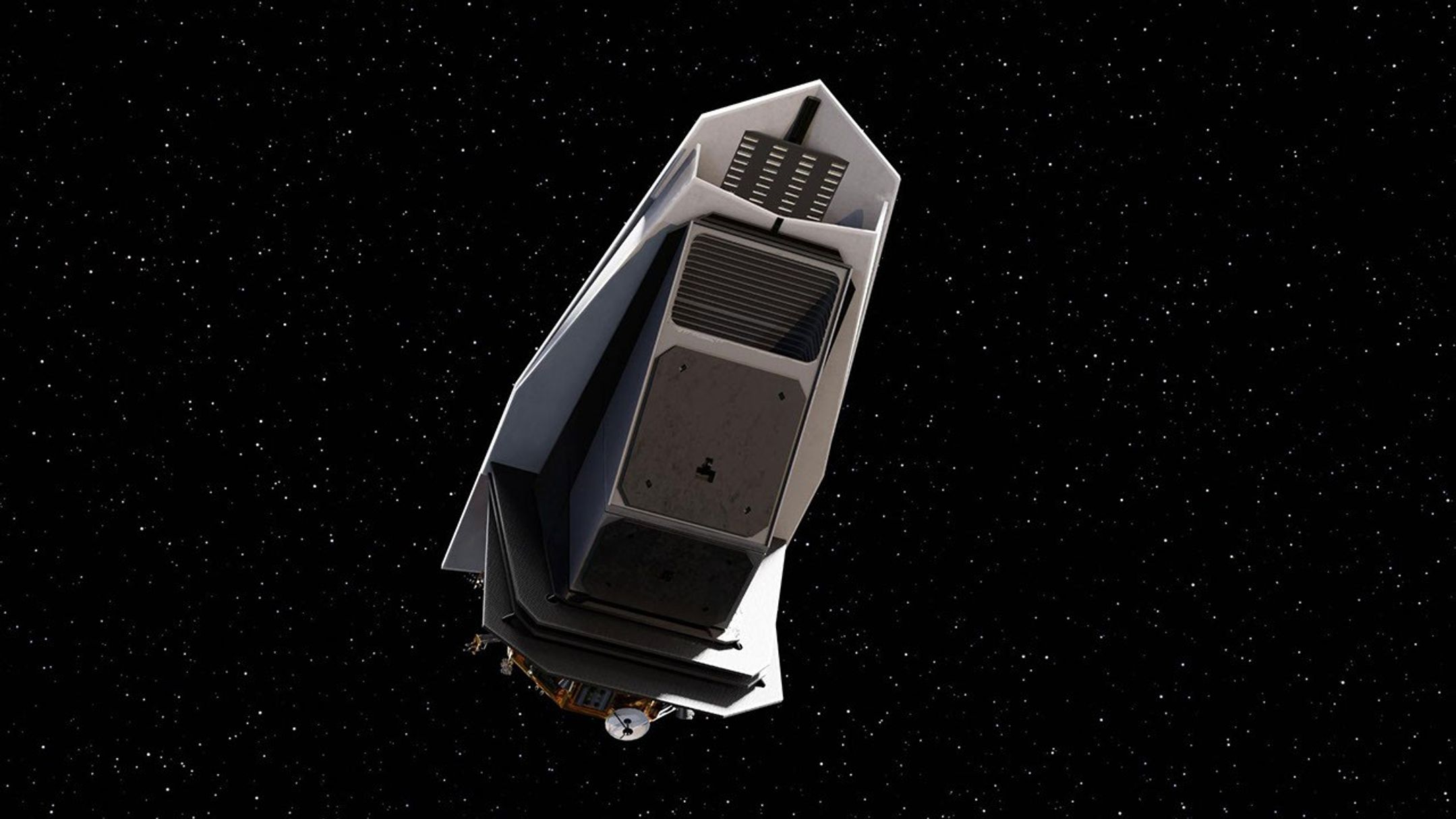
NEO Surveyor in Deep Space (Artist's Concept)
Featured NASA Asteroid Missions
-
NEO Surveyor
Near-Earth Object (NEO) Surveyor is the first space telescope specifically designed to hunt asteroids and comets that may be potential hazards to Earth. As it scans the solar system, NEO Surveyor's sensitive infrared detectors will let it track the most elusive near-Earth objects. Dark asteroids and comets don't reflect much visible light, for example, but they will glow in the infrared spectrum as they're heated by sunlight. The project is managed by NASA's Jet Propulsion Laboratory (JPL) in Southern California.
 An artist's concept of NEO Surveyor, NASA's next-generation Near-Earth Object hunter.
An artist's concept of NEO Surveyor, NASA's next-generation Near-Earth Object hunter. -
WISE/NEOWISE
After its primary mission ended, the WISE space telescope started it’s second act as NEOWISE. In late 2013, the spacecraft was assigned a new mission by NASA’s Planetary Science Division to help NASA identify and describe near-Earth objects (NEOs).
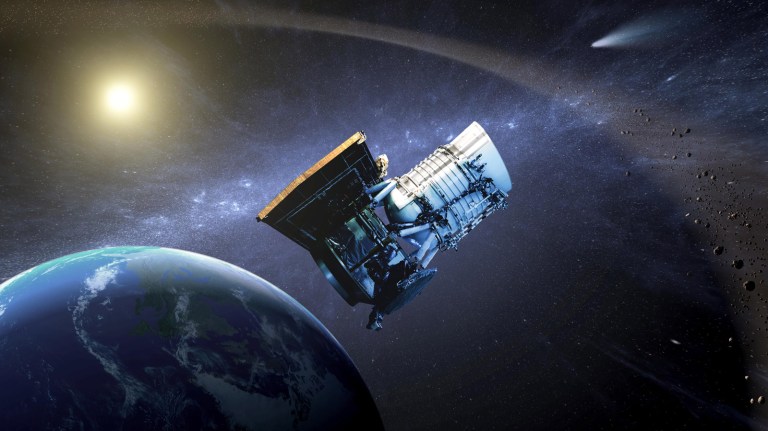 An artist’s concept of NASA's WISE (Wide-field Infrared Survey Explorer) spacecraft, which was an infrared-wavelength astronomical space telescope active from December 2009 to February 2011. In September 2013 the spacecraft was assigned a new mission as NEOWISE to help find near-Earth asteroids and comets.
An artist’s concept of NASA's WISE (Wide-field Infrared Survey Explorer) spacecraft, which was an infrared-wavelength astronomical space telescope active from December 2009 to February 2011. In September 2013 the spacecraft was assigned a new mission as NEOWISE to help find near-Earth asteroids and comets. -
OSIRIS-REx/OSIRIS-APEX
Launched on Sept. 8, 2016, NASA's OSIRIS-REx arrived at near-Earth asteroid Bennu in 2018, and collected a sample of dust and rocks. On Sept. 24, 2023, the spacecraft flew by Earth and dropped off the asteroid sample capsule. It didn't land, and has a new assignment and a new name: It's now called OSIRIS-APEX and will explore asteroid Apophis.
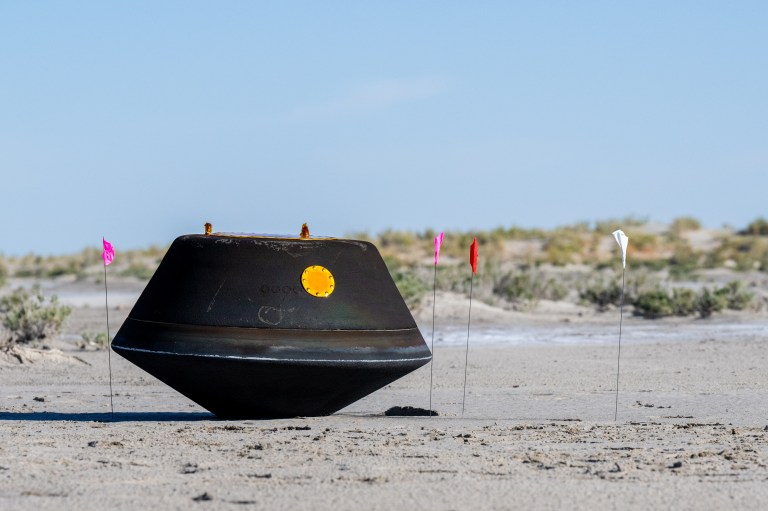 The sample return capsule from NASA’s OSIRIS-REx mission is seen shortly after touching down in the desert, Sunday, Sept. 24, 2023, at the Department of Defense's Utah Test and Training Range. The sample was collected from the asteroid Bennu in October 2020 by NASA’s OSIRIS-REx spacecraft.
The sample return capsule from NASA’s OSIRIS-REx mission is seen shortly after touching down in the desert, Sunday, Sept. 24, 2023, at the Department of Defense's Utah Test and Training Range. The sample was collected from the asteroid Bennu in October 2020 by NASA’s OSIRIS-REx spacecraft. -
Psyche
The Psyche spacecraft is on its way to a unique metal-rich asteroid with the same name, orbiting the Sun between Mars and Jupiter. By August 2029 the spacecraft will begin exploring asteroid Psyche, which scientists think may be the partial core of a planetesimal, a building block of an early planet.
 This artist’s concept depicts NASA’s Psyche spacecraft with its large solar arrays fully deployed, and one of its four Hall-effect thrusters firing (visible via its blue glow) atop the spacecraft’s body.NASA/JPL-Caltech/ASU
This artist’s concept depicts NASA’s Psyche spacecraft with its large solar arrays fully deployed, and one of its four Hall-effect thrusters firing (visible via its blue glow) atop the spacecraft’s body.NASA/JPL-Caltech/ASU -
Lucy
NASA's Lucy mission will explore a record-breaking number of asteroids in the solar system’s main asteroid belt, and Trojan asteroids that share an orbit around the Sun with Jupiter. Launched on Oct. 16, 2021, Lucy has already made discoveries. On Nov. 1, 2023, Lucy made its first asteroid encounter - an asteroid with a contact binary asteroid as its moonlet.
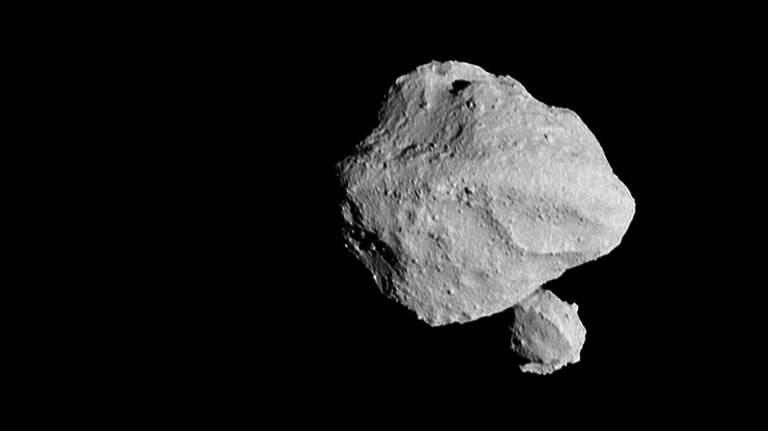
-
DART
NASA's Double Asteroid Redirection Test (DART) – the world’s first planetary defense technology demonstration – successfully impacted asteroid Dimorphos on Sept. 27, 2022, in the agency’s first attempt to move an asteroid in space. Dimorphos is a moonlet to asteroid Didymos.
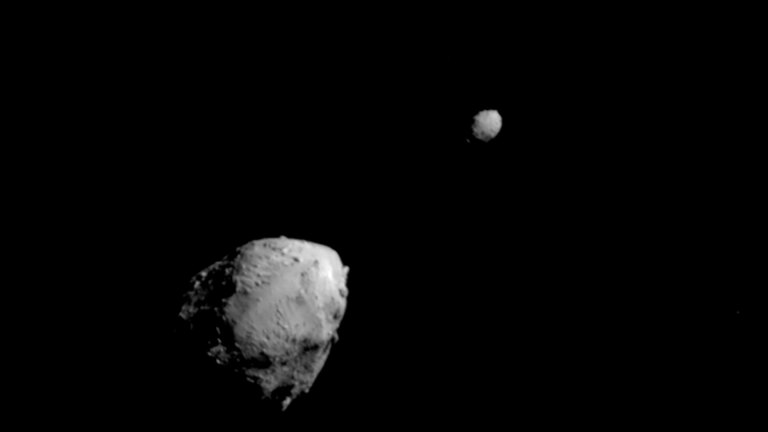 NASA's DART spacecraft captured this view of asteroids Didymos, and its moonlet Dimorphos, moments before DART intentionally impacted the moonlet.
NASA's DART spacecraft captured this view of asteroids Didymos, and its moonlet Dimorphos, moments before DART intentionally impacted the moonlet. -
Dawn
NASA's Dawn spacecraft was launched in 2007 to explore asteroid Vesta, the second most massive body in the main asteroid belt. Dawn arrived at Vesta in 2011, then orbited and explored Vesta for over a year before leaving in September 2012 to explore dwarf planet Ceres.
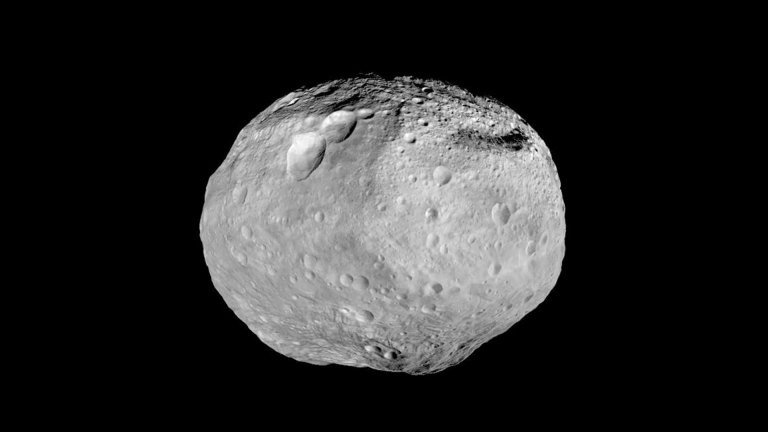 This mosaic blends some of the best views NASA's Dawn spacecraft took of the giant asteroid Vesta. Dawn studied Vesta from July 2011 to September 2012.
This mosaic blends some of the best views NASA's Dawn spacecraft took of the giant asteroid Vesta. Dawn studied Vesta from July 2011 to September 2012. -
Galileo
NASA's Galileo mission was the first spacecraft to fly past an asteroid. It flew past asteroid Gaspra in 1991, and asteroid Ida in 1993.
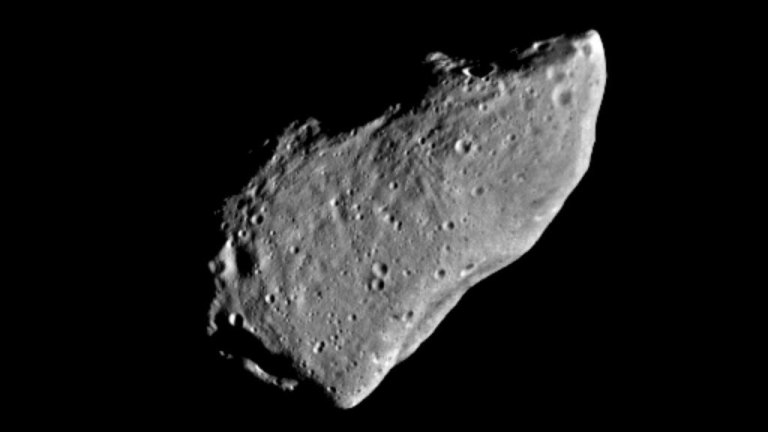 This picture of asteroid Gaspra is a mosaic of two images taken by the Galileo spacecraft from a range of 3,300 miles (5,300 kilometers) some 10 minutes before closest approach on Oct. 29, 1991.
This picture of asteroid Gaspra is a mosaic of two images taken by the Galileo spacecraft from a range of 3,300 miles (5,300 kilometers) some 10 minutes before closest approach on Oct. 29, 1991. -
NEAR Shoemaker
NASA's NEAR was the first spacecraft to orbit an asteroid, and also was the first spacecraft to land on one. Launched on Feb. 17, 1996, NEAR flew by asteroid Mathilde on June 27, 1997. Then on Feb. 14, 2000, NEAR began orbiting asteroid Eros. On Feb. 12, 2001, NEAR touched down on Eros – the first time a U.S. spacecraft was the first to land on a celestial body.
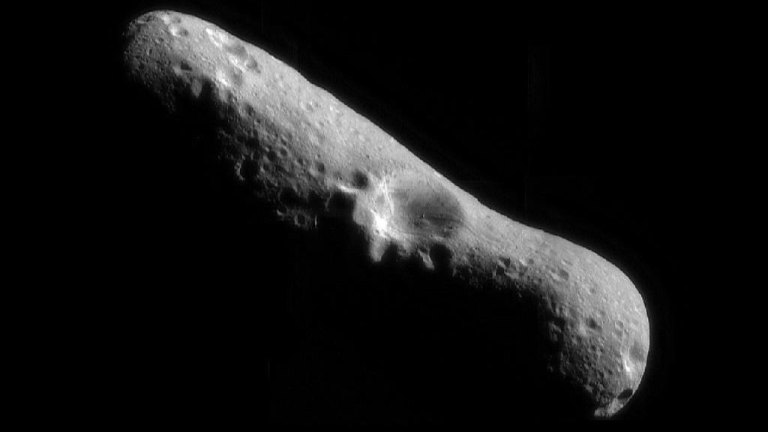 This picture of Eros, the first of an asteroid taken from an orbiting spacecraft, is a mosaic of four images obtained by NASA's NEAR spacecraft on Feb. 14, 2000, immediately after the spacecraft's insertion into orbit.
This picture of Eros, the first of an asteroid taken from an orbiting spacecraft, is a mosaic of four images obtained by NASA's NEAR spacecraft on Feb. 14, 2000, immediately after the spacecraft's insertion into orbit. -
Deep Space 1
Deep Space 1 (DS1) was designed to test new technologies for future deep space and interplanetary missions. As a bonus, the spacecraft also flew by asteroid 9969 Braille on July 29, 1999, at a range of about 16 miles (26 kilometers).
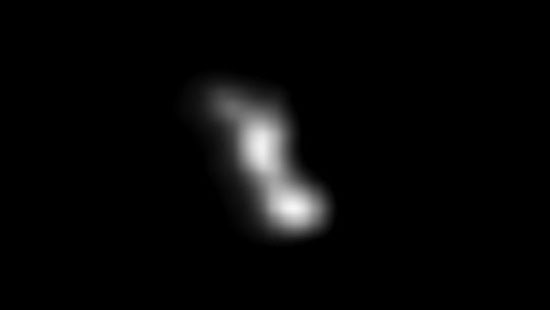 This image was created from a composite of two images taken seconds after NASA's Deep Space 1 (DS1) encountered asteroid 9969 Braille.
This image was created from a composite of two images taken seconds after NASA's Deep Space 1 (DS1) encountered asteroid 9969 Braille. -
Stardust/Stardust NExT
NASA's Stardust was the first spacecraft to bring samples from a comet to Earth. Launched on Feb. 7, 1999, the spacecraft flew within 155 miles (250 kilometers) of comet P/Wild 2 and collected samples of dust and volatiles from the comet's coma. On Nov. 2, 2002, it flew by and imaged asteroid 5535 Annefrank. The spacecraft was given an extended mission known as New Exploration of Tempel 1 (NExT) that included a flyby of Comet Tempel 1.
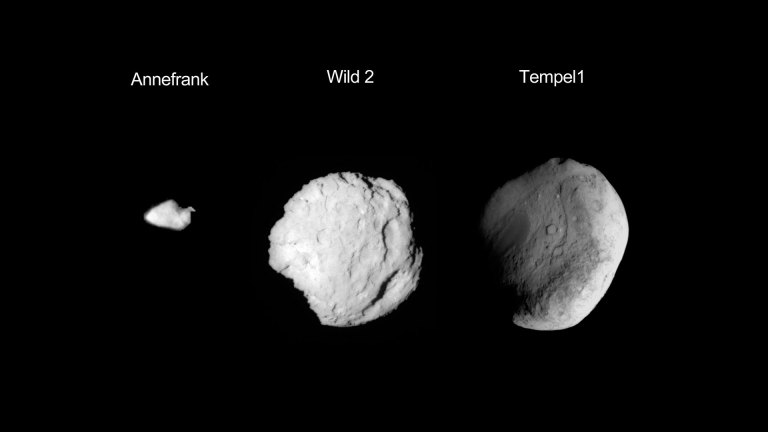 This composite image shows the three small worlds NASA's Stardust spacecraft encountered during its 12 year mission. Stardust performed a flyby of asteroid Annefrank on Nov. 2, 2002. Comet Wild 2 was visited by the spacecraft on Jan. 2, 2004. The comet Tempel 1 encounter occurred on Feb. 14, 2011.
This composite image shows the three small worlds NASA's Stardust spacecraft encountered during its 12 year mission. Stardust performed a flyby of asteroid Annefrank on Nov. 2, 2002. Comet Wild 2 was visited by the spacecraft on Jan. 2, 2004. The comet Tempel 1 encounter occurred on Feb. 14, 2011.
Featured Asteroids
NASA has sent several robotic spacecraft to encounter asteroids up close to learn more about their composition and size.




























